Research Projects
Asteroid hydrothermal alteration – modelling mudballs
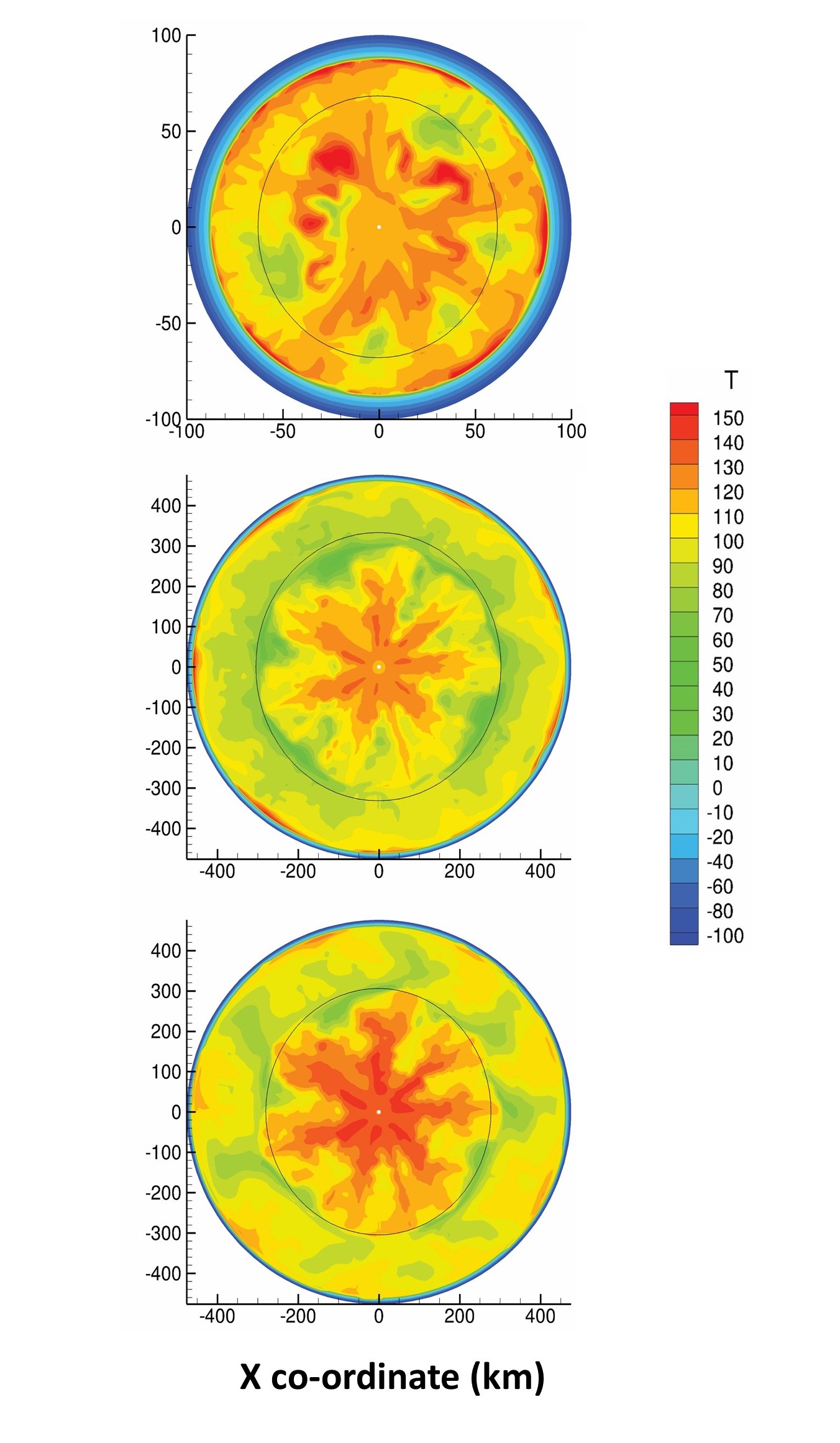
Carbonaceous asteroids may have been the precursors to the terrestrial planets, yet despite their importance, numerous attempts to model their early solar system geological history have not converged on a solution. The assumption has been that hydrothermal alteration was occurring in rocky asteroids with material properties similar to meteorites. However, these bodies would have accreted as a high-porosity aggregate of igneous clasts (chondrules) and fine-grained primordial dust, with ice filling much of the pore space. Short-lived radionuclides melted the ice, and aqueous alteration of anhydrous minerals followed. But at the moment when the ice melted, no geological process had acted to lithify this material. It would have been a mud, rather than a rock. We tested the effect of removing the assumption of lithification. Mud convection both moderates internal temperature and reduces variation in temperature throughout the object. As the system is thoroughly mixed, soluble elements are not fractionated, preserving primitive chemistry. Isotopic and redox heterogeneity in secondary phases over short length scales is expected, as individual particles experience a range of temperature and water-rock histories until they are brought together in their final configuration at the end of convection. These results are consistent with observations from aqueously altered meteorites (CI and CM chondrites) and spectra of primitive asteroids. The “mudball” model appears to be a general solution: for CMs, bodies spanning a ×1000 mass range show similar behaviour; inputs appropriate to other chondrite groups yield outputs that are an excellent match to hydrothermal conditions derived from meteorite analysis. The initial study was published in Science Advances (Bland and Travis (2017) Sci. Adv. 3: e1602514).
Participants: Phil Bland (Curtin University), Bryan Travis (Planetary Science Institute, Tucson)
Desert Fireball Network Data Science

The DFN produces ~1.5 petabytes of data per year, which mostly consists of high resolution all-sky images. This amount of data requires an automated digital pipeline for data reduction.
A wireless link to each Automated Desert Fireball Observatory allows a cross-check of events between cameras and means images can be remotely downloaded. Software has been created to help identify fireball trajectories in these images (Martin Towner). The location of these fireballs in pixel coordinates are converted to sky positions using a powerful astrometric calibration tool that identifies background stars in the image and uses them as a reference system (calibration allows up to a minute of arc precision) (Hadrien Devillepoix). When multiple observatories capture a fireball event, the different observation angles allow us to triangulate its trajectory. Typically at this stage we use a simple, modified least squares minimisation approach, with weightings to account for such things as differences in image quality (Trent Jansen-Sturgeon).
A shutter system within the lens of each observatory encodes a unique, non-repeating DeBrujin sequence into each fireball. This provides accurate, absolute timing information for the duration of the trajectory to 0.4 ms. This enables an analysis of the trajectory to determine meteoroid parameters such as velocity. Purpose written software uses these entry parameters to determine orbits for each meteoroid (Patrick Shober). In order to determine if there will be a potential meteorite, the estimation of the changing meteoroid mass is modeled (Ellie Sansom). Once ablation stops, the atmospheric winds strongly affect a meteoroid’s path to the ground. The dark flight trajectory of a meteoroid is significantly affected by the atmospheric winds, especially by the jet stream. As a result, the meteorite fall position can be shifted by up to several kilometers compared to a scenario with no winds. Data from the Global Forecasting System is used in an atmospheric wind model with a 0.008 degree resolution mesh uniquely created around the area of the fireball (Martin Cupak). A Monte Carlo dark flight simulation is performed to determine a likely search area for main mass and fragments (Trent Jansen-Sturgeon). The software pipeline created by the DFN team has resulted in a large dataset of over 1000 fireball orbits. Development is ongoing to keep up to date with the latest machine learning techniques and ensure correct error analysis.
Development of Synthetic meteorites
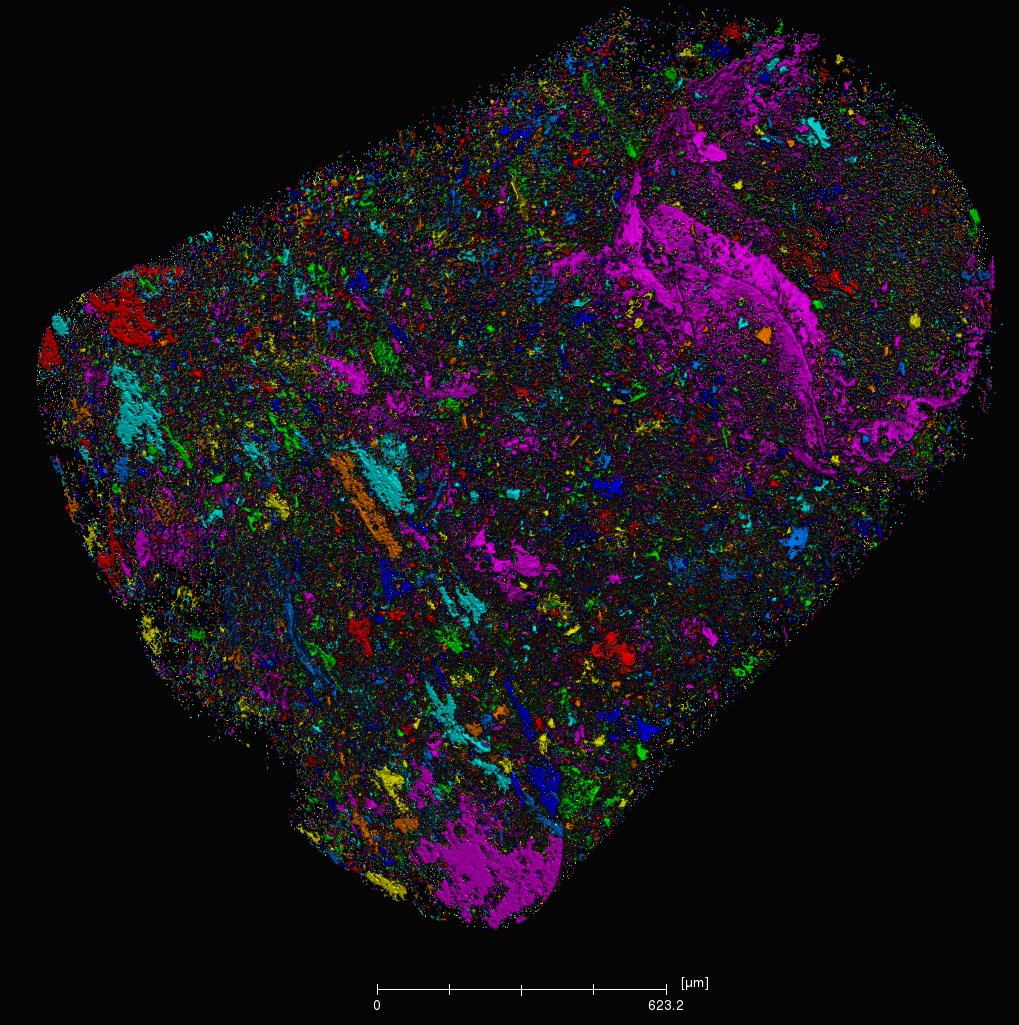
I am currently in collaboration with Daniel Britt at the University of Central Florida working on improving synthetic meteorites by providing microstructural and morphological information taken from the HRXCT analysis of real meteorites. By improving the quality of synthetic meteorites we aim to make accurate proxy materials used for testing sample return and potentially asteroid mining applications.
Participants: Zacchary Hoskins (Curtin University)
Early Earth
Planetary perspective suggests that the early evolution of the Earth defined its unique characteristics among other planetary bodies in the Inner Solar System. In particular its persistent and diverse endogenic activity, sustained presence of hydrosphere and atmosphere and emergence of life. Record of the early evolution on the Earth is sporadic and limited to rare detrital zircon grains identified in a number of sedimentary sequences around the world, but most abundant in some units found in Western Australia, and some isotopic signatures found in magmatic rocks and tracing their source formation to the early stages of Earth’s history. All these materials, including zircon, have been studied extensively during several decades, but still produce new results contributing to the gradually improving understanding of the early history of the planet. New chemical proxies of the past environments are found in the old zircon grains and mineral inclusions that are locked in these grains extending information about early Earth and enabling comparison of its history to that recorded on other planets.
Participants: Alexander Nemchin (Curtin University), Nicholas Timms (Curtin University), Tim Johnson (Curtin University), Simon Wilde (Curtin University), Peter Kinny (Curtin University), Martin Whitehouse (Swedish Museum of Natural History).
Evolution of Martian mantle
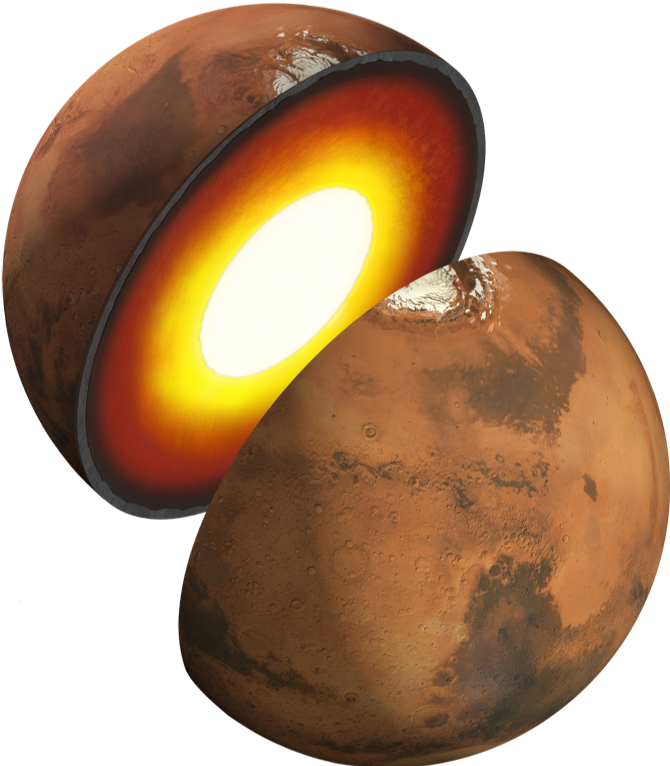
Analytical data obtained from available Martian samples, mostly represented by basalts, indicate that while Mars had an extended magmatic activity comparable to that of the Earth, evolution of basaltic sources in the mantle of Mars stalled during very early stages. Unlike terrestrial mantle, where differentiation and chemical/isotopic exchange between different reservoirs continued throughout the history of the planet, Martian samples suggest preservation of different chemical reservoirs formed very early perhaps just a few tens of millions of years after formation of Solar System and accretion of Mars. Consequently, Martian samples provide a snapshot of an intermediate stage of mantles development on the planets in the inner Solar System and give an opportunity to understand how mantle has developed and evolved on the Earth, where most of the early record has been erased by subsequent activity.
Participants: Alexander Nemchin (Curtin University), Phil Bland (Curtin University), Gretchen Benedix (Curtin University), Jeremy Bellucci (Swedish Museum of Natural History), Martin Whitehouse (Swedish Museum of Natural History), Martin Bizzaro (Natural History Museum of Denmark), James Connelly (Natural History Museum of Denmark)
Field studies of terrestrial impact craters in Australia, USA, Europe, South Africa, and elsewhere

Field-based studies of rocks at terrestrial impact craters provide crucial ‘ground-truth’ evidence of what rocks and mineral experience and ultimately record during dynamic impact events, when the Earth’s crust literally gets turned ‘inside out’ in a matter of seconds. Typical projects involve visiting sites for day trips or weeks-long excursions to observe the geology, conduct field mapping, collect bedrock samples or detrital sediments, make drone surveys, and more. Our crater adventures take us around the world to visit sites both easy to access and ones in far off remote areas. Within Australia, we respect and appreciate working with indigenous communities and traditional owners to gain access to impact sites across the land. Recent field excursions have involved visits to study impact craters at sites such as Kentland, Santa Fe, Rock Elm, Meteor Crater (USA); Ries (Germany), Vredefort (South Africa); Sudbury (Canada); Spider, Gosses Bluff, Wolfe Creek, Yarrabubba, Yallalie (Australia), and other places.
Participants: Aaron Cavosie, Nick Timms, Martin Towner, Katarina Miljkovic, Morgan Cox
Fireballs on Mars
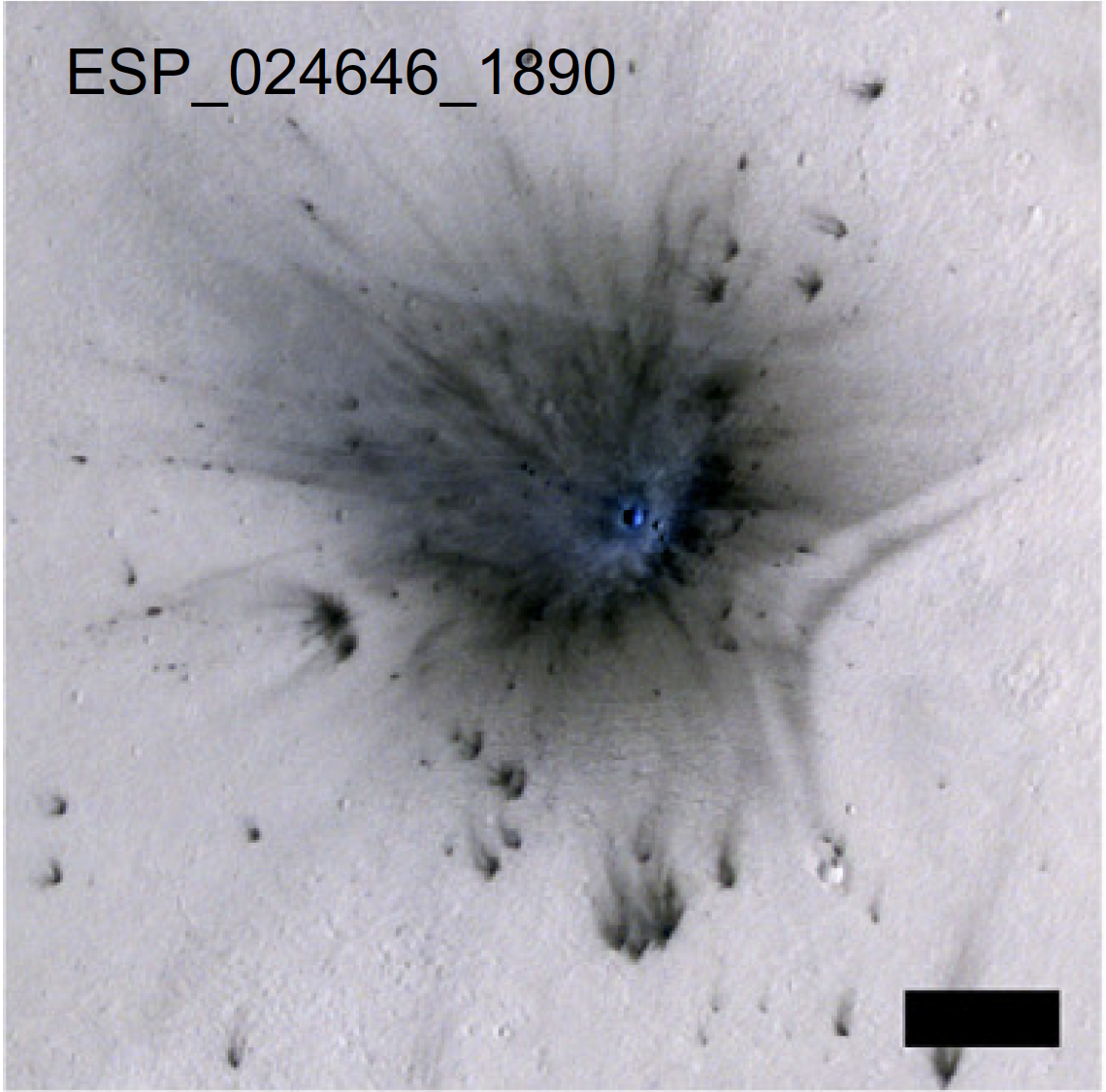
Impact-generated seismic signals will be a primary result recorded by the seismometer onboard the InSight mission. This innovative mission will record meteoroid impacts onto the surface of Mars through seismic responses of the atmosphere and the ground. Complex physics (much of it unsolved) lies behind the shock wave that is released during a hypervelocity impact, especially when the properties of the Martian crust are still largely unknown. The mass and velocity of a meteoroid impact on Mars are affected by the atmospheric entry (even though Martian atmosphere is less dense than the Earth’s). The effect Martian atmosphere has on incoming meteoroids is still unknown. Possible outcomes are grouped into three classes: a) Meteoroids that survive the entire trajectory through the atmosphere and make a single impact on the ground; b) Meteoroids that burst and fragment in the atmosphere, and the fragments burn up in the atmosphere (airburst); c) Meteoroids that burst and fragment in the atmosphere, but the fragments do not completely burn up in the atmosphere; rather they make an impact in the ground in the form of a cluster of multiple craters (Miljkovic et al., 2016). Recent high-resolution mapping of small craters on Mars indicated that about 60% of them are clusters of craters (Daubar et al., 2013). This impact scenario is also the most complex. This work is done in collaboration with the Desert Fireball Network team.
Participants: Katarina Miljkovic, Eleanor Sansom, Tanja Neidhart, Andrea Rajsic, Hadrien Devillepoix, Martin Towner (Curtin University), Gareth Collins (Imperial College London), Ingrid Daubar (JPL), and the InSight Impacts Science Team.
Geochemical and microstructural analysis of impact melt, glass, ejecta, and its crystal cargo
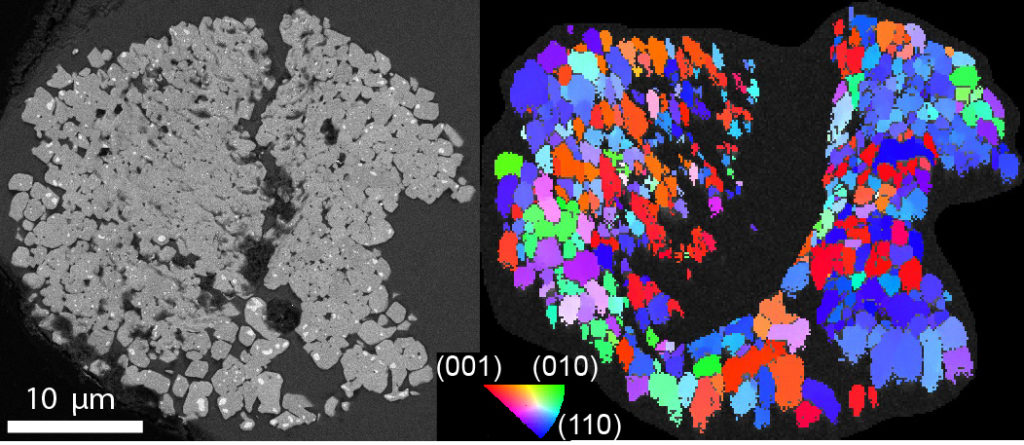
Meteorite impacts generate instantaneous extreme pressure and temperature excursions that shock, melt, and vaporize both target rocks and the impactor. In this process, a wider range of impact melts can form, and be found at craters as quenched glass, glass fragments in impact-melt bearing breccia (suevite), in ejected products such as tektites, microtektites, and spherules. Impact glass is also found in lunar impact breccia and soil. Geochemical and microstructural studies of impact glass and relic mineral phases can reveal information about elemental and isotopic fractionation during the impact event, mineral phase transformations, and the thermal evolution of melts, all of which provide key information that helps to reconstruct the impact process.
Team: Aaron Cavosie, Nick Timms, Alexander Nemchin
High-resolution analysis of Meteorites by micro HRXCT
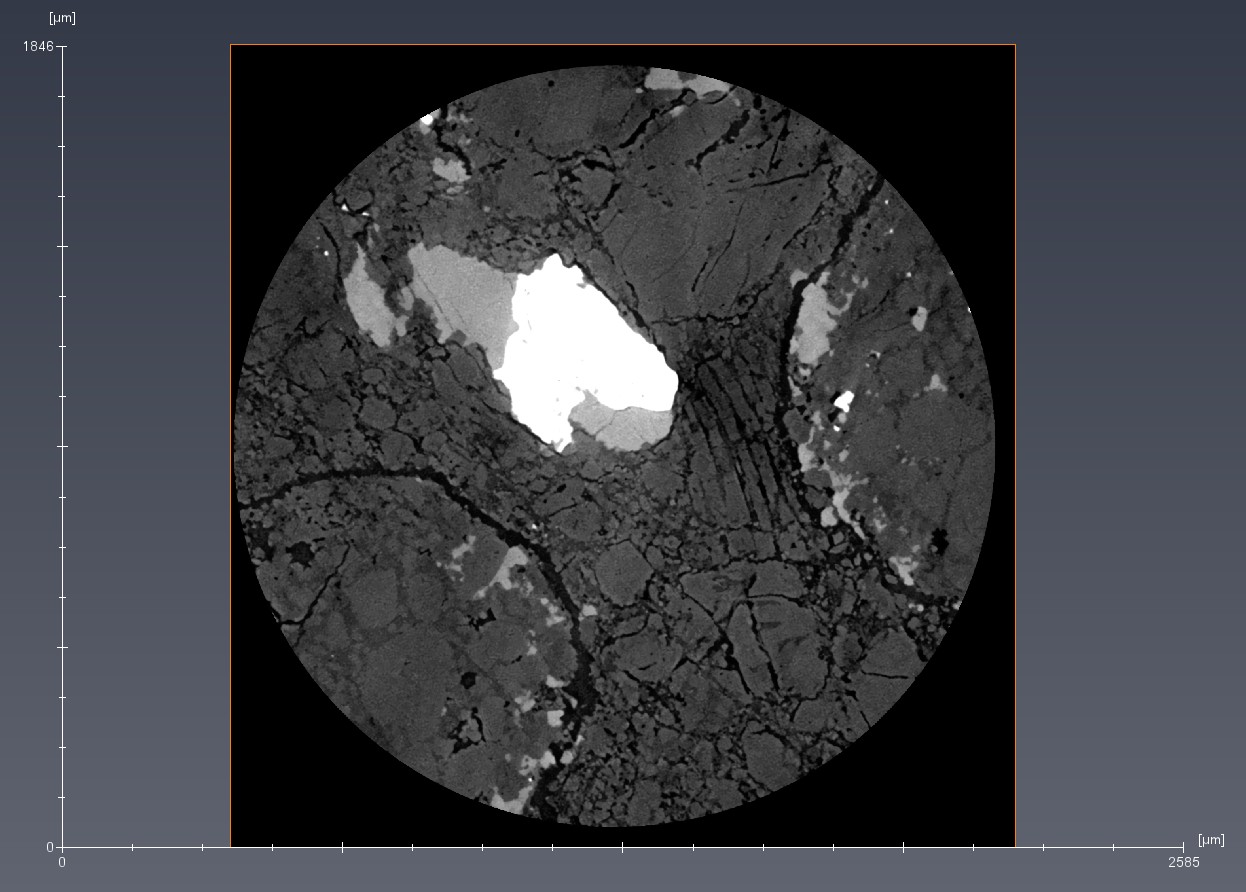
As a part of my studentship with CSIRO I have been working with Belinda Godel to image and analyse primitive chondrites at resolutions higher than any that have been previously attempted. These resolutions let us observe micro-structures and morphologies of meteorite components such as pores and metals, allowing us to constrain the processes involved in early planet development.
Participants: Zacchary Hoskins (Curtin University)
Impact and volcanic history of the asteroid 4-Vesta
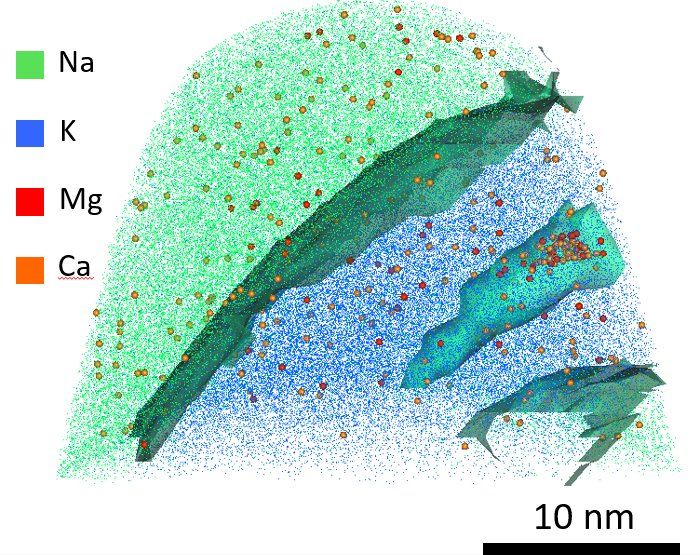
Chondritic meteorites are the primitive bricks of the solar system, whereas achondrites are differentiated rocks derived directly from planetary bodies and satellites (e.g. the Moon, Mars, differentiated asteroids). Achondrites record crucial information on the formation and early evolutions of the planets as well as the history of the solar system at large. Eucrites are extraterrestrial basalts and cumulate gabbros whereas diogenites are orthopyroxenites formed, and subsequently more or less metamorphosed, at the crustal level of the asteroid 4-Vesta. 40Ar/39Ar thermochronology of unbrecciated eucrites and diogenites offer the best way to understand the igneous, metamorphic and cooling processes occurring in the crust of Vesta since they were not substantially affected/altered by secondary impact processes. Furthermore, 40Ar/39Ar dating applied to shocked eucrites and diogenites can help us to understand the protracted bombardment history of Vesta and will give us an opportunity attempt to elucidate the ages of the two large impact structures present at the South Pole of Vesta.
Participants: Fred Jourdan, Trudi Kennedy, Gretchen Benedix (Curtin University)
Picture 1: Binocular microscope image of a piece of the Moama unbrecciated eucrite showing plagioclase and orthopyroxene crystals.
Impact history of the asteroid Itokawa
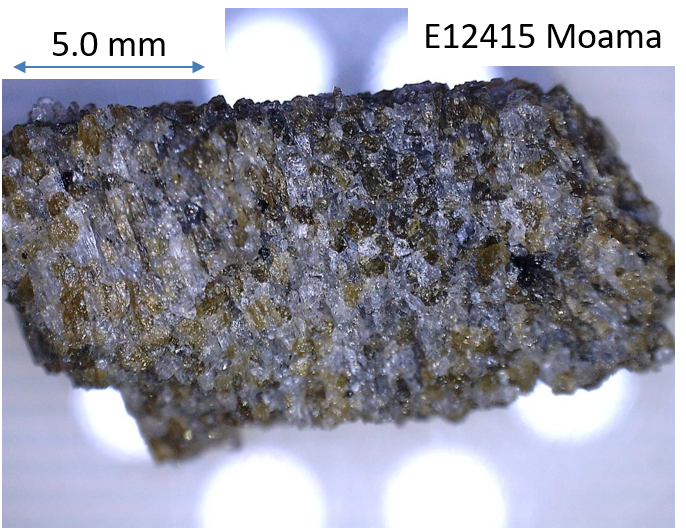
In situ extraterrestrial samples returned for study (e.g., from the Moon) are crucial in understanding the origin and evolution of the Solar System as, contrary to meteorites, they provide a known geological context for the samples and their analyses. Asteroid 25143 Itokawa is a rubble pile asteroid consisting of reaccumulated fragments from a catastrophically disrupted monolithic parent asteroid, and from which regolith dust particles have been recovered by the Hayabusa space probe. Here we combine TOF-SIMS, EBSD, TEM, EDS, 40Ar/39Ar geochronology, and Atom Probe Tomography (APT) to examine several particles recovered from the Itokawa asteroid by the Hayabusa mission. For example, careful petrographic observations of selected dust particles, coupled with Electron Back Scattered Diffraction analyses allow us to quantify the shock state of each of these particles. The results are combined with state of the art single-grain 40Ar/39Ar analyses that allow us to date the last time each of the particles was heated above a few hundred degrees, indicating either a crystallization age or an impact age for each of the particle. These results of this study will provide a better understanding of (1) formation process of chondritic particles, (2) the collisional history of Asteroid Itokawa, as well as (3) the break-up process itself.
Participants: Fred Jourdan, Nick Timms, Will Rickard, Phil Bland. D.W. Saxey, D. Fougerouse, S.M. Reddy, Z. Quadir (Curtin University)
Picture 2: Atom probe tomography image of a microperthite exolution lamellae in a plagioclase crystal from a dust particle from Itokawa.
Impact history of the Moon
Impact history of the Moon is a reflection of the rate of impact cratering in the inner Solar System. This rate has changed through time from being significantly higher in the early history of the Solar System. Furthermore, it has been proposed that the planets, including Earth, have experienced dramatic spikes in bombardment rate at certain periods of time (for example around 3.9 Ga). Impact cratering has undoubtedly played a fundamental role in the shaping evolution of planets. It definitely has had a far-reaching effect on the evolution of life on the Earth. Therefore, understanding how the meteorite bombardment rate has changed over time is vital to forming a more complete picture of our Solar System’s evolution. We are using several different types of materials existing in the collections of lunar samples to aid a better understanding of changes in the impact rate that occurred throughout the history of the planets. This includes zircon and phosphate grains found in lunar impact breccias and impact glasses, formed from solidifying droplets of melt produced by the impacts and recovered from lunar soils.
Participants: Alexander Nemchin (Curtin University), Nicholas Timms (Curtin University), Marc Norman (ANU), Martin Whitehouse (Swedish Museum of Natural History), Joshua Snape (Free University, Amsterdam)
Lunar basalts and evolution of mantle reservoirs on the Moon
Basalts provide a window into the planetary interiors and record evolution of planetary mantle reservoirs. This capability was never fully utilised for the Moon. We have developed a new approach for determining precise crystallisation ages of lunar basalts and applying this approach in a systematic investigation of all chemical types of basalts identified on the Moon. These ages open an opportunity for a combined study of several isotope systems, such as U-Pb, Sm-Nd, Rb-Sr and Lu-Hf, which will help to build a comprehensive model of evolution of lunar mantle reservoirs, precise history of Lunar Magma Ocean crystallisation and confidently determine when the Moon itself has formed.
Participants: Alexander Nemchin (Curtin University), Martin Whitehouse (Swedish Museum of Natural History), Renaud Merle (Swedish Museum of Natural History), Joshua Snape (Free University, Amsterdam), Wim Van Westrenen (Free University, Amsterdam), Martin Bizzaro (Natural History Museum of Denmark), James Connelly (Natural History Museum of Denmark)
Microstructural analysis of shocked U-Pb geochronometers
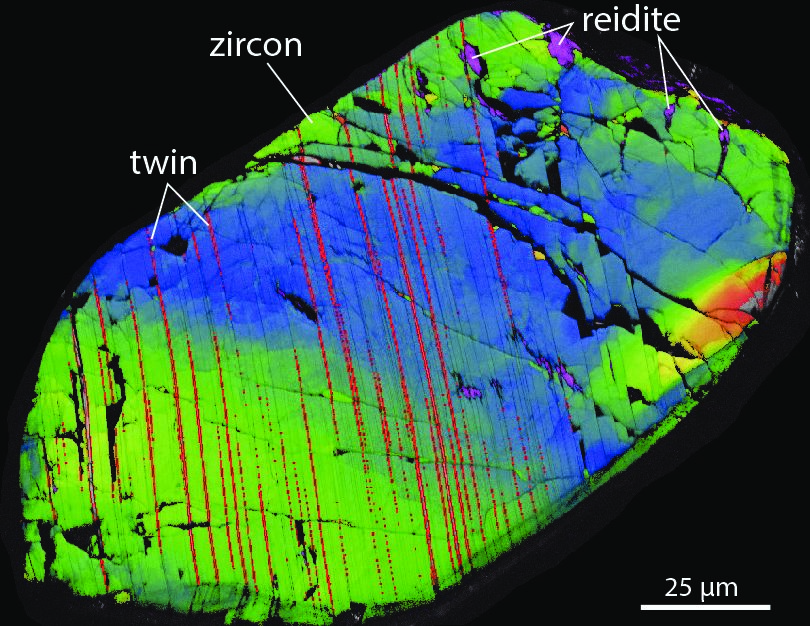
Accessory mineral geochronometers such as zircon, monazite, baddeleyite, titanite, apatite, and xenotime are increasingly being recognized for their ability to preserve diagnostic microstructural evidence of hypervelocity-impact processes. In some circumstances they can also provide an opportunity to date impact events. Some are durable enough to survive through deep geological time, long after the physical evidence of an impact crater has been eroded away or obliterated by other processes. In collaboration with a wide variety of international researchers, our team at Curtin have developed a strong track record in investigating shock deformation and metamorphism of datable accessory phases and dating impacts. With the aid of the wide variety of state-of-the-art high-resolution analytical facilities available at Curtin, including electron backscatter diffraction (EBSD), secondary ion mass spectrometry (SIMS), laser ablation inductively coupled mass spectrometry (LA-ICPMS), time-of-flight SIMS, (ToF-SIMS), and atom probe tomography (APT), we have developed new conceptual frameworks for the physical and chemical responses of a variety of accessory minerals to extreme conditions in impact environments, and how they can be used for geochronology and a better temporal record of Earth impacts.
A series of projects has led to breakthrough publications that include the following topics: identifying new shock microstructures in zircon, monazite, and xenotime; using microstructures to determine phase transformation history (phase heritage); dating impact events using shock-recrystallized minerals; developing a new high-temperature geothermometer for impact melts; discovering over 50% of the global occurrences of the rare high-pressure mineral reidite (including the oldest example); demonstrating the survival of detrital shocked minerals transported over 2,000 km from the source crater; resolving trace element (including Pb) mobility during impacts; confirming an impact origin for several proposed impact craters.
Curtin team: Nick Timms, Aaron Cavosie, Steve Reddy, Alexander Nemchin, Chris Kirkland, Morgan Cox, James Bishop
Searching for evidence of impacts in the sedimentary record: Detrital shocked minerals
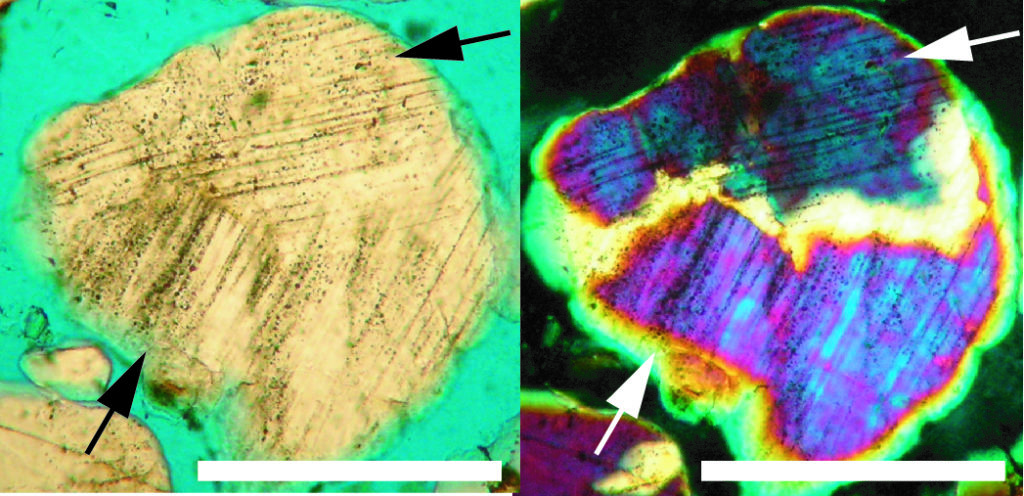
The terrestrial impact record is far from complete, with only about 190 confirmed craters or remnants recognized on Earth. This is far fewer than the 10s of thousands or more recognized on the Moon, Mars, and other bodies. Large craters can survive for billions of years, however smaller craters are more susceptible to erosion, and once gone, leave no surface trace of their former existence. However, a suite of refractory minerals known to form diagnostic shock microstructures, including quartz, monazite, zircon, and others, can survive the process of uplift, erosion and transport, and can exist as detrital grains in younger siliciclastic sedimentary rocks such as sandstones. So-called ‘detrital shocked minerals’ have been documented to survive and preserve microstructural and isotopic signatures of impact even after having been transported 1000s of km from the original impact site, as has been demonstrated in studies of the Vredefort, Sudbury, Santa Fe, and Rock Elm impact structures. Detrital shocked minerals are thus likely to be much more prevalent in sedimentary rocks than has previously been recognized, and have the potential to preserve evidence of craters that no longer exist. Our team is currently working at a number of sites around the globe to search for evidence of impacts in the sedimentary record.
Team: Aaron Cavosie, Morgan Cox, Phil Bland, Steve Reddy
Structure and evolution of the lunar crust
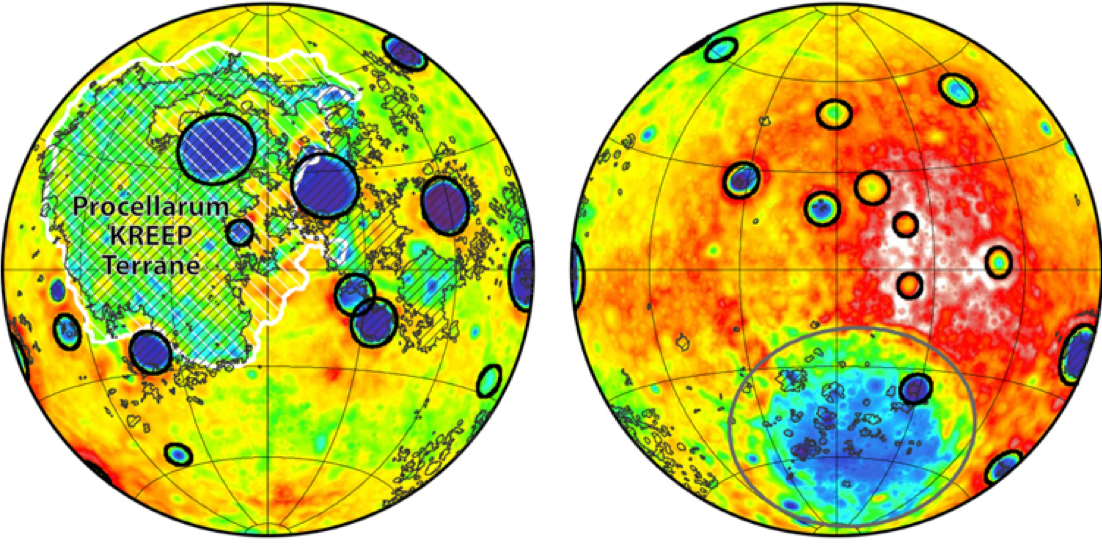
The largest and the most violent impact events in the inner solar system occurred within the first Gyr after solar system formation. These impacts, although very old, had a profound effect on the evolution of planetary surfaces. In 2012, the Gravity Recovery and Interior Laboratory (GRAIL) mission mapped the gravity field of the Moon and provided an extremely important insight into the lunar crust and the Moon’s interior structure (Zuber et al., 2013; 2016). Using the GRAIL-derived crustal structure data from the Moon (Wieczorek et al., 2013) and numerical impact modelling, Miljković et al. (2013) showed that lateral variations in the lunar crust and mantle temperatures could have lead to hemispherical differences in final crater size by nearly a factor of two, and that the special nature of the lunar nearside implies that the magnitude of basin-forming impact bombardment has been overestimated, mainly with respect to the impactor mass flux. Similar works (Miljkovic et al., 2015) showed that the mantle underlying thin lunar crust could have been excavated at the surface of the Moon during the formation of the largest basins. Direct observation of the mantle on the surface of the Moon would provide a significant constraint towards understanding lunar chemistry, mechanism of its formation and initial differentiation. Furthermore, numerical impact modelling studies produced impact scaling relationships between the impactor and the crater properties (Miljkovic et al., 2016), including the origin of the rings in multi-ring impact basins (Johnson et al., 2016; Miljkovic et al., 2017; Lemelin et al., 2017).
Participants: Katarina Miljkovic (Curtin University), Mark Wieczorek (OCA Nice), Maria Zuber (MIT)
Structure and evolution of the Martian crust
The space mission to investigate the crust and interior structure of Mars is the InSight (Interior exploration using Seismic Investigations, Geodesy and Heat Transport) mission. The seismic instrument SEIS (Seismic Experiment for Interior Structure) on-board InSight will quantify the seismic activity of the planet, which could be caused by a number of processes, from tectonic activity to meteorite impacts. This project involves: a) using high-resolution numerical modelling to investigate the mechanics of small and large crater formation on Mars, b) Develop a new geophysical theme – numerical impact-seismology – that will investigate seismic signatures caused by high-speed impacts, c) Compare the computational impact modeling results with the data obtained by the InSight mission and orbital remote sensing data to decipher physical properties of the Martian crust.
Participants: Katarina Miljkovic, Andrea Rajsic, Tanja Neidhart (Curtin University), Gareth Collins (Imperial College London), Mark Wieczorek (OCA Nice), and the InSight Impacts Science Team.
Interpreting Martian surface geology
The effort to understand the geological history of Mars, especially in the context of habitability, is one of the highest profile areas of global planetary science research. We can unravel the geology of Mars, and to do this, we make use of the tools that we have available: remote sensing data sent back from orbiting and roving spacecraft at Mars, and rocks on Earth. There are ~130 meteorites (as of Apr 2019 – http://www.imca.cc/mars/martian-meteorites-list.htm), out of the world’s collection of ~60,000, that have been shown to come from Mars. Combining advanced and complete mineralogical and petrological characterisation of the meteorites with spectral analysis of specimens in the lab, we can address queries about the geologic evolution of the surface of Mars.
Participants: Gretchen Benedix (Curtin University), Lucy Forman (Curtin University), Ken Orr (Curtin University), Vicki Hamilton (Southwest Research Institute), Nick Timms (Curtin University), Steve Reddy (Curtin University)
Nebula processes – volatile depletion in the disk
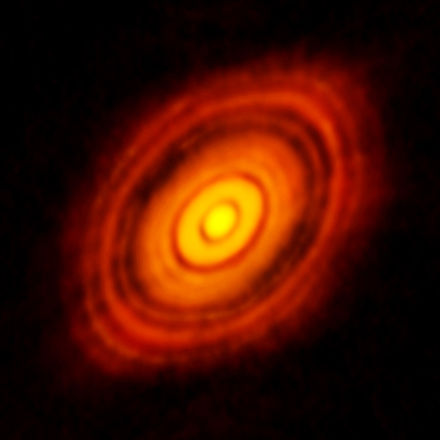
Bulk chondritic meteorites and terrestrial planets show a monotonic depletion in moderately volatile and volatile elements relative to the Sun’s photosphere and rare (undepleted) CI carbonaceous chondrites. Volatile depletion was the most fundamental chemical process affecting the inner solar nebula – it gave is the terrestrial planets. Without it, the Earth would have an atmosphere x2000 its current density, a core 2/3 its current size, and (if liquid water was stable) an ocean 30km deep over the entire surface. Not a hospitable environment for complex life. But despite its importance debate continues as to its cause. Carbonaceous chondrites are the most primitive rocks available to us, and fine-grained, volatile-rich matrix is the most primitive component in these rocks. Several volatile depletion models posit a pristine matrix, with uniform CI-like chemistry across the different chondrite groups, and depleted chondrules: in this model, volatile depletion was a result of chondrule formation, and different planetary and meteorite compositions are simply a function of matrix:chondrule ratio. We have shown that all chondritic components are volatile depleted; that chondrules and matrix in a given rock show many chemical similarities – overall, they have the same depletion profiles – but have complementary compositions in other elements. The evidence indicates that that volatile depletion was a disk wide process related to nebula cooling, and that different chondritic components formed in the same, chemically distinct nebula region, and exchanged elements during chondrule formation. In continuing work we are attempting to identify and characterise the host mineral phases for volatile elements, and use mineralogy and composition to further deconvolve nebula processes (Daly et al. (2017a) GCA 216, 42-60; Daly et al. (2017b) GCA 216, 61-81; Daly et al. (2017c) Geology 45, 847-850).
Participants: Phil Bland (Curtin University), Nicole Nevill (Curtin University), Luke Daly (University of Glasgow)
Primordial impacts – compacting candyfloss
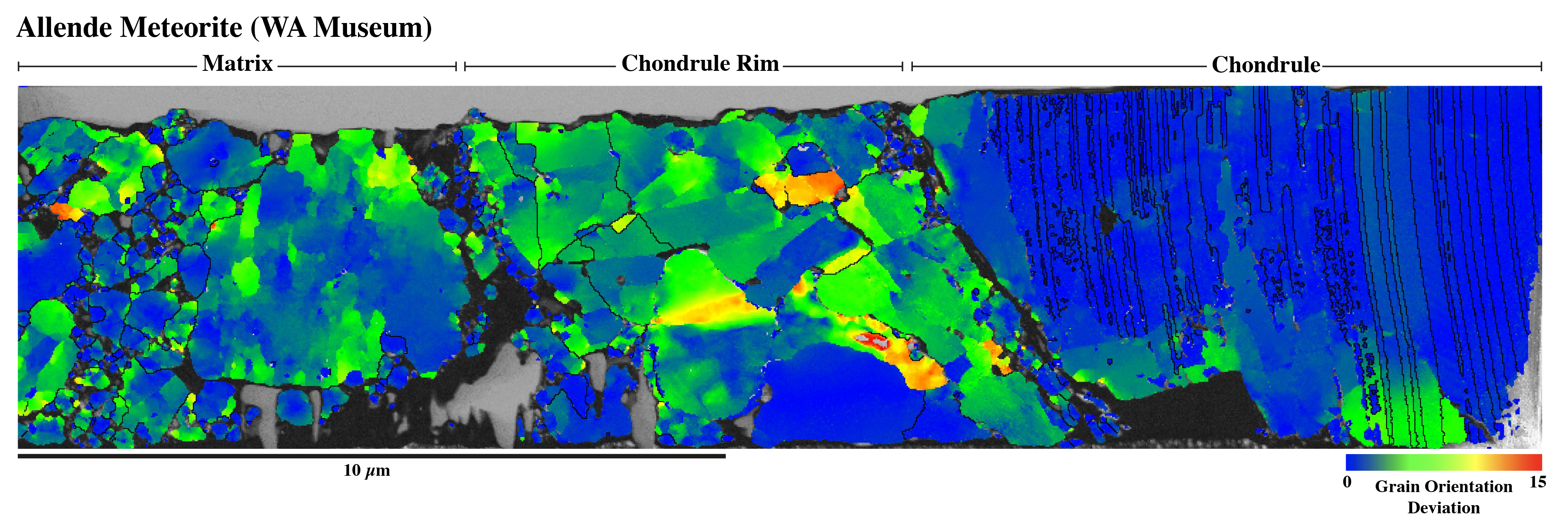
Prior to becoming chondritic meteorites, primordial solids were a poorly consolidated mix of mm-scale igneous inclusions (chondrules) and high-porosity sub-µm dust (matrix). We used high-resolution numerical simulations to track the effect of impact-induced compaction on these materials. Here we show that impact velocities as low as 1.5 km/s were capable of heating the matrix to 1,000 K, with pressure–temperature varying by 10 GPa and 1,000 K over 100 µm. Chondrules were unaffected, acting as heat-sinks, so that matrix temperature excursions were brief. As impact-induced compaction was a primary and ubiquitous process, our new understanding of its effects requires that key aspects of the chondrite record be re-evaluated: palaeomagnetism, petrography and variability in shock level across meteorite groups. Our data suggest a lithification mechanism for meteorites, and provide a ‘speed limit’ constraint on major compressive impacts that is inconsistent with recent models of solar system orbital architecture that require an early, rapid phase of main-belt collisional evolution. The initial study was published in Nature Communications (Bland et al. (2014) Nat. Comm. 5:5451) with subsequent work exploring the process in more detail, including its significance for chondrite palaeomagnetism (Muxworthy et al. (2017) MAPS 52, 2132-2146). Subsequent detailed microstructural analysis supports model predictions, finding significantly higher deformation in matrix grains than in chondrule interiors, but relatively high deformation at the edges of chondrules. Evidence points to compaction as the key process in lithifying chondrites, rather than other suggested mechanisms such as ‘hot pressing’ (Forman et al. (2016) EPSL 452, 133-145; Forman et al. (2017): Geology 45, 559-562).
Participants: Phil Bland, Lucy Forman, Nick Timms (Curtin University), Gareth Collins, Tom Davison, Adrian Muxworthy (Imperial College London)
Response of datable accessory minerals during impacts
Accessory mineral geochronometers such as zircon, monazite, baddeleyite, titanite, and xenotime are increasingly being recognized for their ability to preserve diagnostic microstructural evidence of hypervelocity-impact processes. In some circumstances they can also provide an opportunity to date impact events. Some are durable enough to survive through deep geological time, long after the physical evidence of an impact crater has been eroded away or obliterated by other processes. In collaboration with a wide variety of international researchers, our team at Curtin have developed a strong track record in investigating shock deformation and metamorphism of datable accessory phases and dating impacts. With the aid of the wide variety of state-of-the-art high-resolution analytical facilities available at Curtin, including electron backscatter diffraction (EBSD), secondary ion mass spectrometry (SIMS), laser ablation inductively coupled mass spectrometry (LA-ICPMS), time-of-flight SIMS, (ToF-SIMS), and atom probe tomography (APT), we have developed new conceptual frameworks for the physical and chemical responses of a variety of accessory minerals to extreme conditions in impact environments, and how they can be used for geochronology and a better temporal record of Earth impacts.
A series of projects has led to breakthrough publications that include the following topics: identifying new shock microstructures in zircon, monazite, and xenotime; using microstructures to determine phase transformation history (phase heritage); developing a new high-temperature geothermometer for impact melts; discovering over 50% of the global occurrences of the rare high-pressure mineral reidite (including the oldest example); demonstrating the survival of detrital shocked minerals transported over 2,000 km from the source crater; resolving trace element (including Pb) mobility during impacts; developing an approach for high-precision dating of impact events; confirming an impact origin for several proposed impact craters.
Curtin team: Nick Timms, Aaron Cavosie, Steve Reddy, Alexander Nemchin, Chris Kirkland, Morgan Cox
Volatile elements on Mars
Mars is the only planet in the inner Solar System other than Earth, where hydrological cycle and by inference, the potential for life can be not only observed remotely but also studied in the laboratories on the Earth using available rock samples. Chemical and isotopic signatures of past processes that have taken place in Martian hydrosphere and atmosphere can be extracted from the minerals in Martian meteorites. In particular, some volatile elements locked in these minerals help to trace temporal changes in near surface conditions that existed on the planet as well as spatial variability of Martian near surface environments. Indirectly this work also helps to pinpoint original location of the samples represented by meteorites on the surface of Mars and link laboratory observations to the vast pool of data obtained from the orbiters, landers and rovers.
Participants: Alexander Nemchin (Curtin University), Phil Bland (Curtin University), Gretchen Benedix (Curtin University), Jeremy Bellucci (Swedish Museum of Natural History), Martin Whitehouse (Swedish Museum of Natural History).
